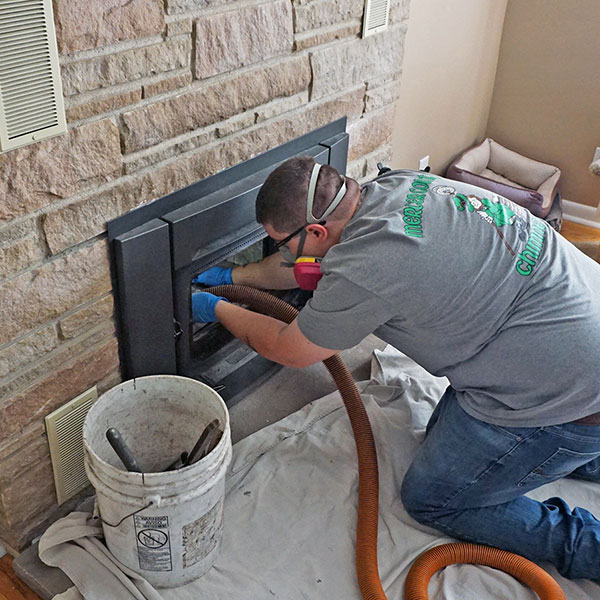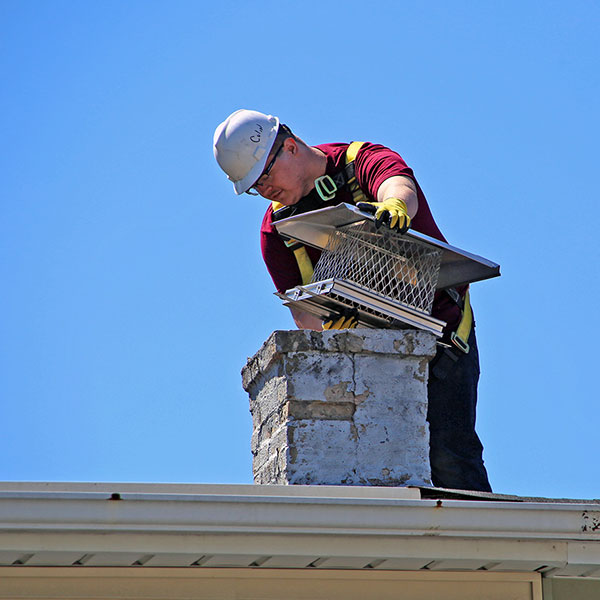Maintaining a Safe Fireplace Between Professional Cleanings
Many homeowners know the importance of having a professional chimney inspection and cleaning each year. Even though you have an annual chimney inspection and cleaning, there are still a few things you can do to maintain a safe fireplace between professional cleanings. Doing so will minimize health and safety risks and prolong the lifespan of your flue liner, damper, and other chimney components. It will also improve the heating efficiency of your fireplace.
 Remove Ashes in the Firebox
Remove Ashes in the Firebox
You should remove excess ashes in the firebox after every few fires. Wait for the fireplace to cool (about 24 hours), then scoop the ashes into a metal container with an airtight seal. You should wear a face mask and gloves to avoid contact. Although the ashes appear to be cooled, they still can contain enough heat to start a fire if it comes into immediate contact with leaves, twigs, and other combustibles. After a few days, you can throw the ashes away or recycle them in your garden. Check with your local municipality for recommended ash disposal procedures in your community. We recommend leaving a small amount of ash, about an inch, under the grate in the firebox to make it easier to light your fires.
Clean the Screen and Glass Doors
Clean the screen and glass doors in between professional cleanings to maintain a clear view of the fire. It will also help prevent corrosive residues of the combustion gases from damaging the screen and door.
You can make a natural cleaning solution by filling a spray bottle with one-part vinegar to three parts of warm water. Spray the glass doors with the cleaning solution and wipe with a clean cloth. Remove the mesh screen and lay it on some newspapers. Spray the screen with the water-vinegar solution and wipe clean. Commercial fireplace glass door cleaners are also available at your hearth supply store.
Scrub the Grate
Take the grate outside on the patio to clean. Wet it down with some water to loosen the oily build-up. Mix a mild dishwashing liquid (such as Dawn) with water. Wait a few minutes for the suds to loosen the build-up and use a nylon brush to scrub clean. Rinse with water and allow the grate to dry before placing it back in the fireplace.
 Check the Chimney Cap
Check the Chimney Cap
The chimney cap is a cover that helps prevent moisture intrusion. It should be checked periodically between professional cleanings to ensure it is intact and secure. Some caps also have a mesh screen that will prevent small animals such as birds, squirrels, raccoons, and debris from obstructing the flue vent.
Burn Only Seasoned Firewood
The low moisture content of quality firewood that has been seasoned for at least six months will help reduce smoke, soot, and creosote accumulation, making it easier to maintain the fireplace in between professional chimney cleanings. It will also burn hotter for a longer-lasting and cozier fire. Freshly chopped or unseasoned wood has a high moisture content. It produces more smoke, soot, creosote. It will also burn faster at a lower temperature requiring more wood fuel to keep the fire going.


